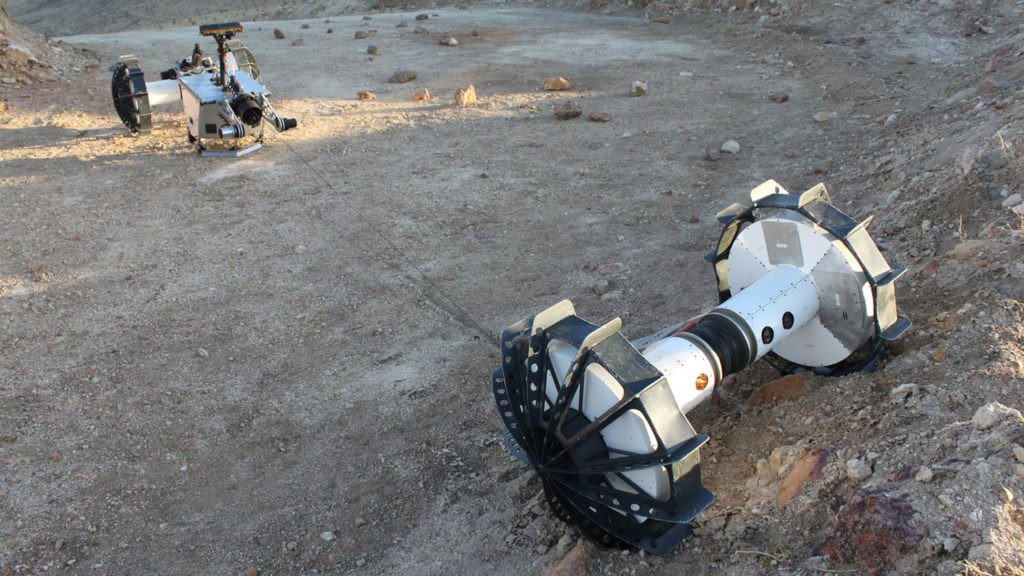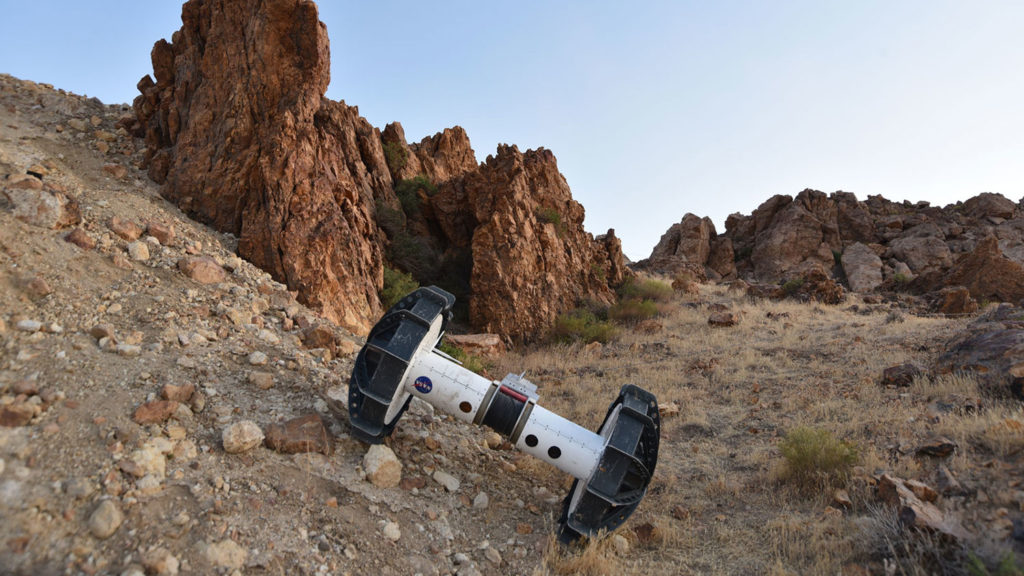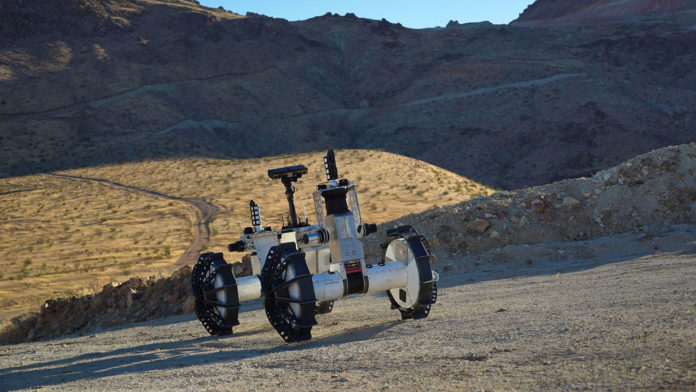NASA is testing a new four-wheeled rover that can revolutionize space exploration. Made of a pair of two-wheeled vehicles, NASA‘s DuAxel is designed to descend crater sides and near-vertical cliffs on the Moon, Mars, and beyond.
The rover is actually made of a pair of two-wheeled rovers, each called Axel – hence its name is DuAxel (short for “dual-Axel”). To be able to explore hostile environments, the rover stops, lowers its chassis, and anchors it to the ground before essentially splitting in two. With the rear of the rover firmly held in place, the forward half undocks and rolls away on a single axle.
One two-wheeled Axel descends the slope while tethered to its counterpart anchored above the slope. The tether serves as a climbing rope of sorts while also providing power and a means of communication. It uses instruments stowed in its wheel hub to study a scientifically attractive location that would normally be out of reach for ordinary rovers.

This rover moves autonomously through the rocky terrain, avoiding obstacles using artificial intelligence. Its wheels are also specially adapted to roll on stones and pointed rocks. It has special sensors to analyze the soil while mapping its surroundings and steering around obstacles via an integrated camera system.
DuAxel was tested in the Mojave Desert in the United States by a team of engineers from NASA’s Jet Propulsion Laboratory. “It performed extremely well in the field, successfully demonstrating its ability to approach a challenging terrain, anchor, and then undock its tethered Axel rover,” said Issa Nesnas, a robotics technologist at JPL. “Axel then autonomously maneuvered down steep and rocky slopes, deploying its instruments without the necessity of a robotic arm.”

The idea behind the creation of the two single-axle rovers is to bring maximum versatility; the four-wheel configuration manages itself to drive great distances in rugged landscapes, while the two-wheel version offers agility that larger vehicles lack. “DuAxel opens up access to more extreme terrain on planetary bodies such as the Moon, Mars, Mercury, and possibly some icy worlds, like Jupiter’s moon Europa,” added Nesnas.
“The key advantage of using DuAxel is made clear when you have landing site uncertainty, such as we do on Mars, or you want to move to a new location to rappel and explore with Axel,” said Patrick Mcgarey, a robotic technologist at JPL and DuAxel team member. “It enables untethered driving from the landing site and allows for temporary anchoring to the terrain because it is essentially a transforming robot made for planetary exploration.”
For now, as DuAxel rover is a demonstration of technology with no right destination, the team will continue to develop its capabilities.
